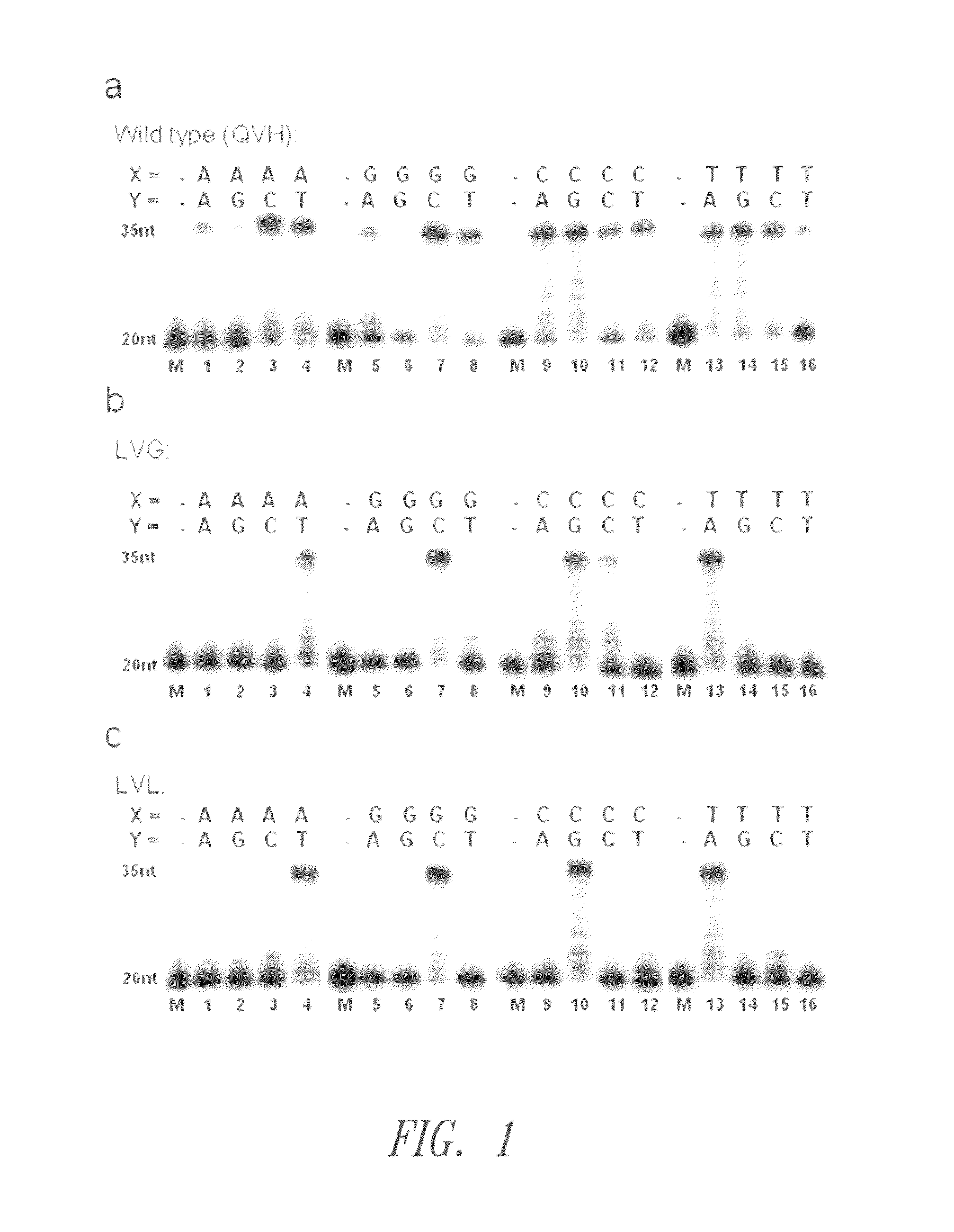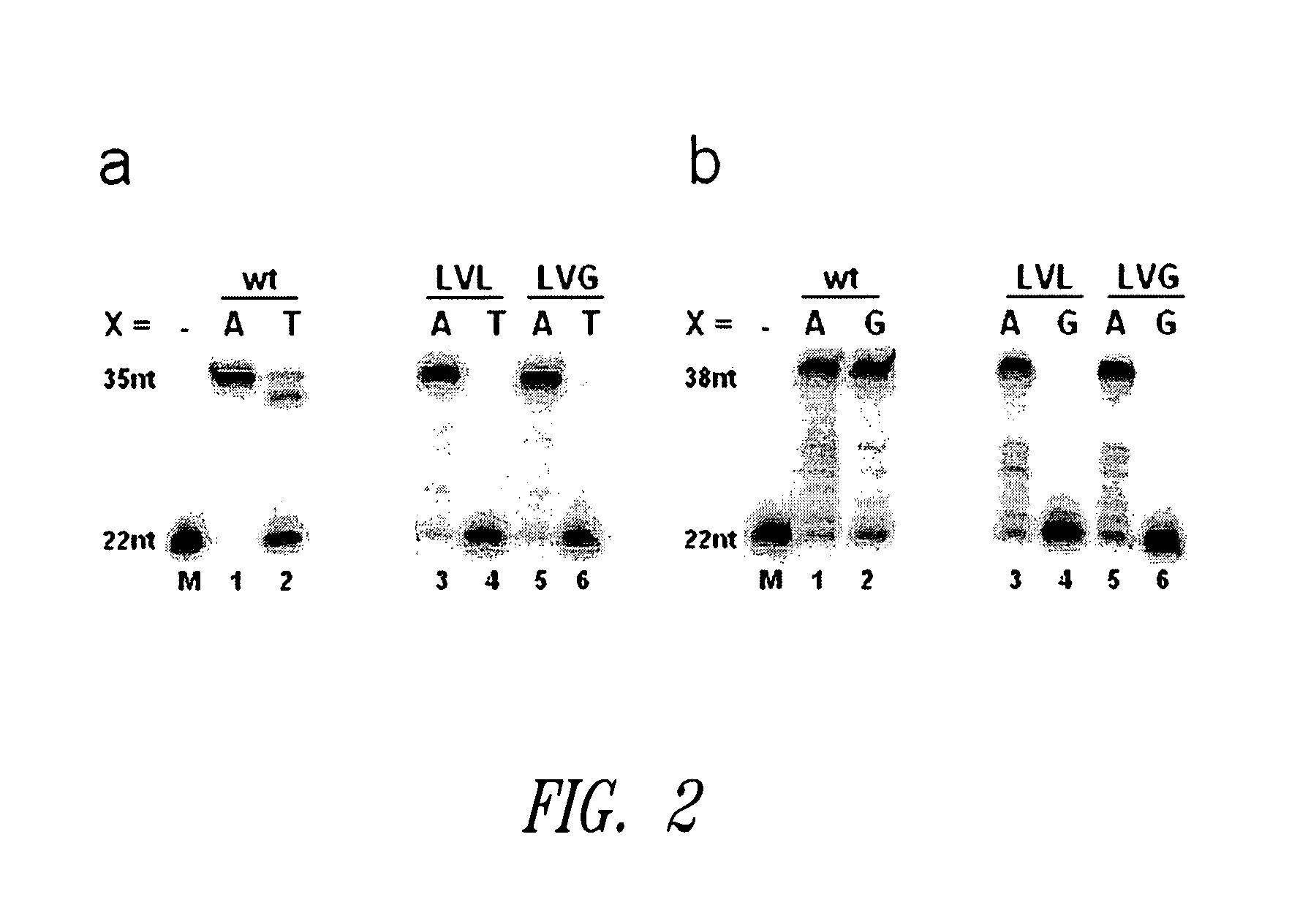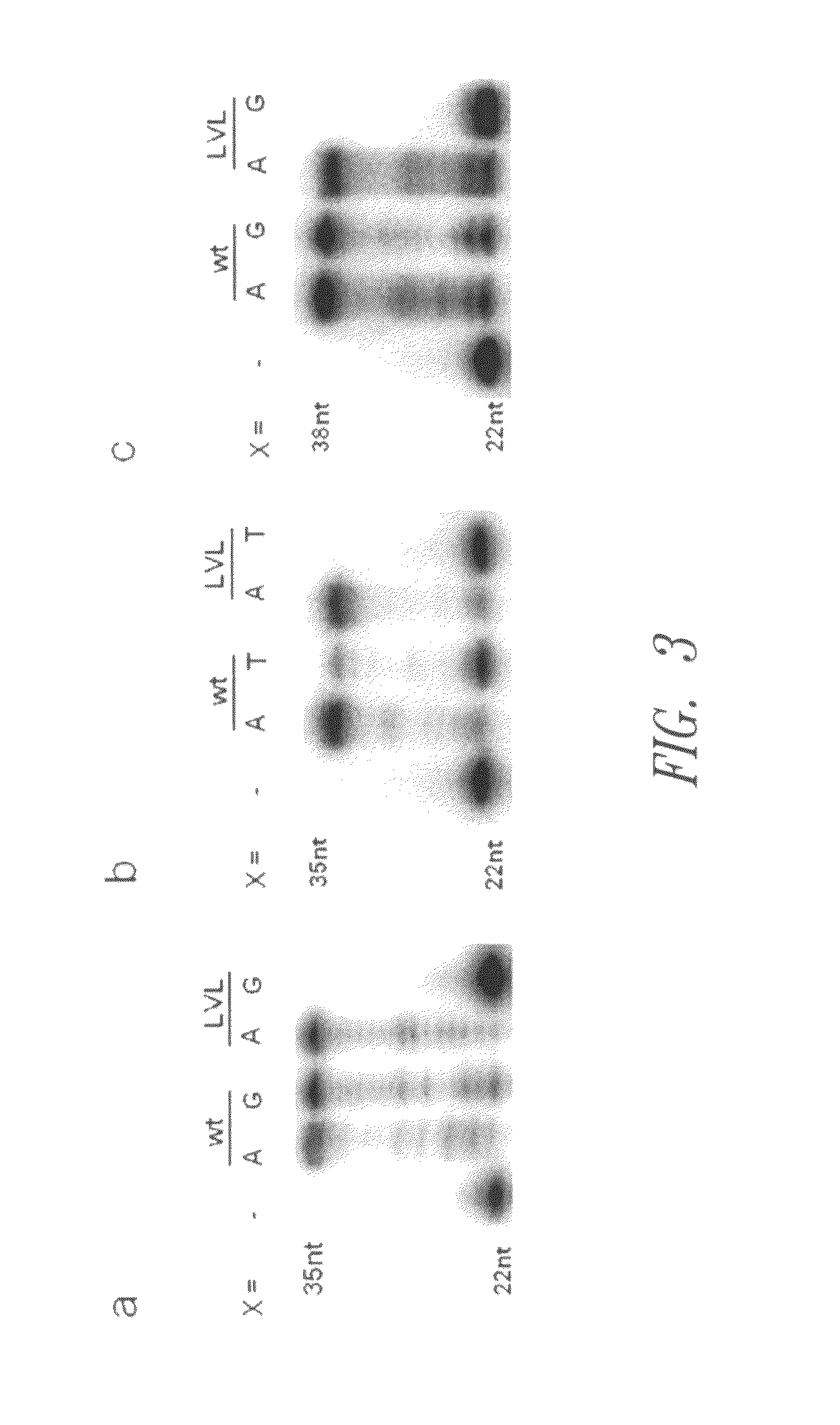Mutated DNA polymerases with increased mispairing discrimination
- Summary
- Abstract
- Description
- Claims
- Application Information
AI Technical Summary
Benefits of technology
Problems solved by technology
Method used
Image
Examples
example 1
Construction of a Library and Purification of Klenow Fragment Variants
[0087]The plasmid pQKF− (Brakman, S., Nieckchen, P., ChemBioChem 2001, 2, 773-7; see also the equivalent plasmid pQE30 shown in SEQ ID NO: 26) enables the expression of the N-terminal 6-his-labeled Klenow fragment of E. coli DNA polymerase I (3′→5′ exo−) under the control of a T5 promoter / Double lac operator sequence. The introduction of mutations into the motif C sequence which codes for Q879, V880 and H881 was effected by a two-step megaprimer mutagenesis. PCR reactions were performed by using PfuTurbo DNA polymerase (Stratagene) and under standard conditions. The first PCR was performed with a doped primer library (5′-GTA CGT ATG ATC ATG NNN NNN NNN GAT GAA CTG GTA TTT-3′; SEQ ID NO: 5) which was constructed in such a way as to contain 40% non-wild type nucleotides on each of the nine target positions and a 23mer downstream primer (5′-GCT AAT TAA GCT TGG CTG CAG GC-3′; SEQ ID NO: 6), which yielded a 195mer PCR ...
example 2
Screening
[0089]The reaction mixtures for screening the library contained 150 nM template, 225 nM primer, 50 mM Tris-HCl, pH 7.3, 10 mM MgCl2, 1 mM DTT, 0.05% Triton® X-100 and 200 μM each of dNTPs. The reactions comprised the 20mer primer FVL20TH (5′-ACA AAA TAC CTG TAT TCC TT-3′; SEQ ID NO: 8) which is designed to bind with its 3′-terminal base to the human SNP G1691A, which is involved in the factor V Leiden mutation. For measurements of pairing extension efficiencies, the 90mer template TFVL90A (5′-GAC ATC ATG AGA GAC ATC GCC TCT GGG CTA ATA GGA CTA CTT CTA ATC TGT AAG AGC AGA TCC CTG GAC AGG CAA GGA ATA CAG GTA TTT-3′; SEQ ID NO: 9) which codes for the mutant allele 1691A of the human factor V-ORF was used, which resulted in a TA base pair at the 3′ terminus of the primer. To obtain access to activities of Klenow variants which process a mismatched primer terminus, the 90mer template TFVL90G (5′-GAC ATC ATG AGA GAC ATC GCC TCT GGG CTA ATA GGA CTA CTT CTA ATC TGT AAG AGC AGA TCC ...
example 3
Primer Extension Assays
[0090]Primer-template substrates were annealed by mixing 5′-32P-labeled primer in a specific reaction buffer (50 mM Tris-HCl, pH 7.3, 10 mM MgCl2, 1 mM DTT, 0.05% Triton® X-100) with a twofold amount of template. The mixture was heated at 95° C. for 5 min and subsequently allowed to cool to room temperature over 1 hour. After the annealing, dNTPs were added, and the solution was incubated at 37° C. for 5 min. 15 μl reactions were initiated by adding 5 μl of enzyme solution in 1× reaction buffer to 10 μl of annealing mixture, followed by incubation at 37° C. for 10 min. The assays included 150 nM primer, 225 nM template, 1 mM each of dNTPs and 590 nM enzyme in a suitable reaction buffer. After 10 min of incubation, the reactions were stopped by adding 30 μl of gel-loading buffer (80% formamide, EDTA, 20 mM), and the product mixtures were analyzed by 14% denaturing PAGE (see FIGS. 1 and 2). The following primer and template sequences were employed in connection ...
PUM
| Property | Measurement | Unit |
|---|---|---|
| Thermal stability | aaaaa | aaaaa |
| Lipophilicity | aaaaa | aaaaa |
Abstract
Description
Claims
Application Information
 Login to View More
Login to View More - R&D
- Intellectual Property
- Life Sciences
- Materials
- Tech Scout
- Unparalleled Data Quality
- Higher Quality Content
- 60% Fewer Hallucinations
Browse by: Latest US Patents, China's latest patents, Technical Efficacy Thesaurus, Application Domain, Technology Topic, Popular Technical Reports.
© 2025 PatSnap. All rights reserved.Legal|Privacy policy|Modern Slavery Act Transparency Statement|Sitemap|About US| Contact US: help@patsnap.com



